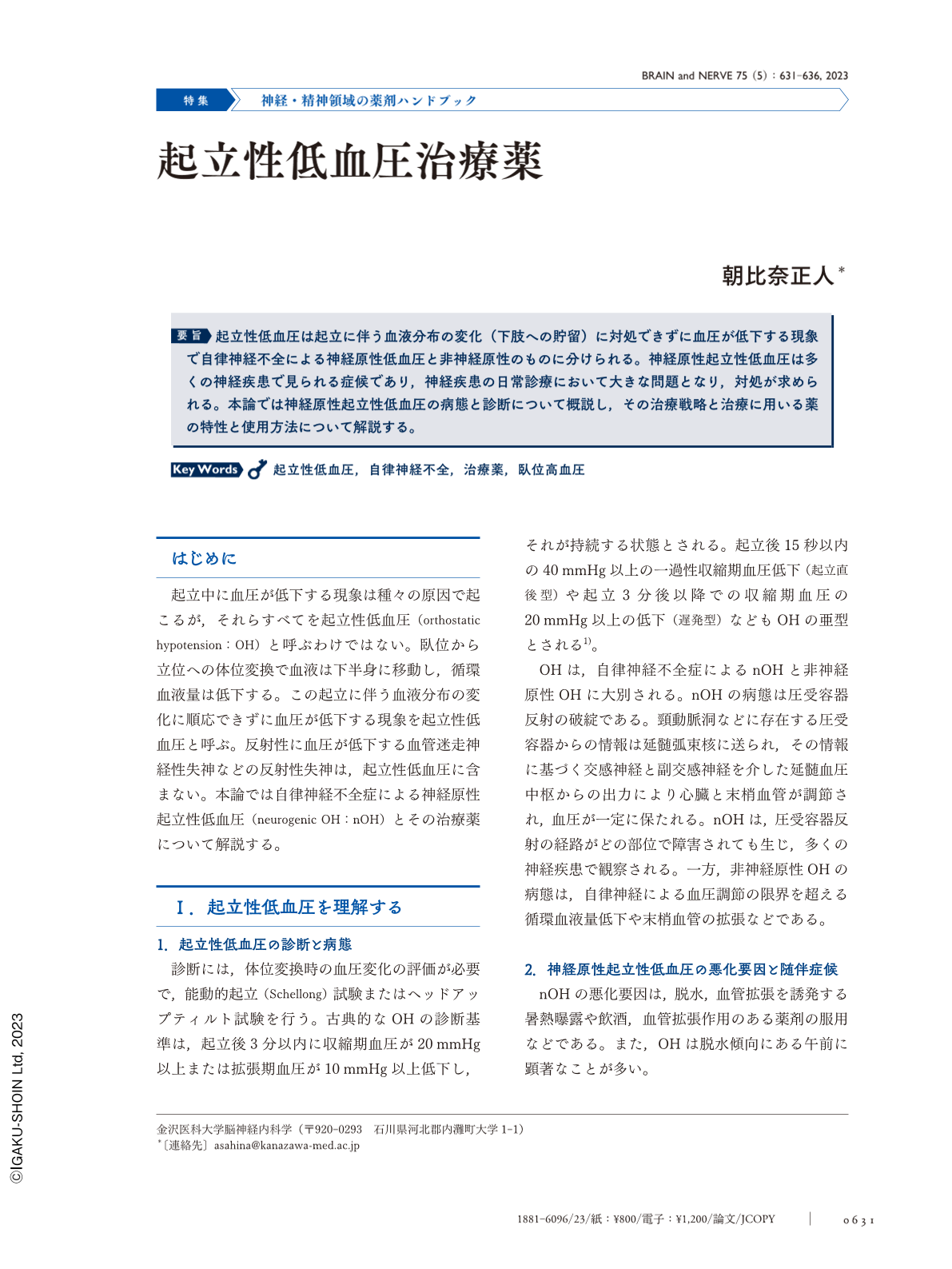Japanese
English
- 有料閲覧
- Abstract 文献概要
- 1ページ目 Look Inside
- 参考文献 Reference
起立性低血圧は起立に伴う血液分布の変化(下肢への貯留)に対処できずに血圧が低下する現象で自律神経不全による神経原性低血圧と非神経原性のものに分けられる。神経原性起立性低血圧は多くの神経疾患で見られる症候であり,神経疾患の日常診療において大きな問題となり,対処が求められる。本論では神経原性起立性低血圧の病態と診断について概説し,その治療戦略と治療に用いる薬の特性と使用方法について解説する。
Abstract
Orthostatic hypotension is a phenomenon characterized by reduction in blood pressure secondary to the inability to adapt to changes in blood volume distribution (pooling of blood in the lower extremities) observed when standing from a seated or supine position. Orthostatic hypotension is classified into neurogenic and non-neurogenic types. Neurogenic orthostatic hypotension due to autonomic failure may occur in most neurological diseases and is a major concern encountered in daily practice. In this review, I present an overview of the pathophysiology and diagnosis of neurogenic orthostatic hypotension and describe the therapeutic strategies and characteristics of drugs used for this condition.

Copyright © 2023, Igaku-Shoin Ltd. All rights reserved.


